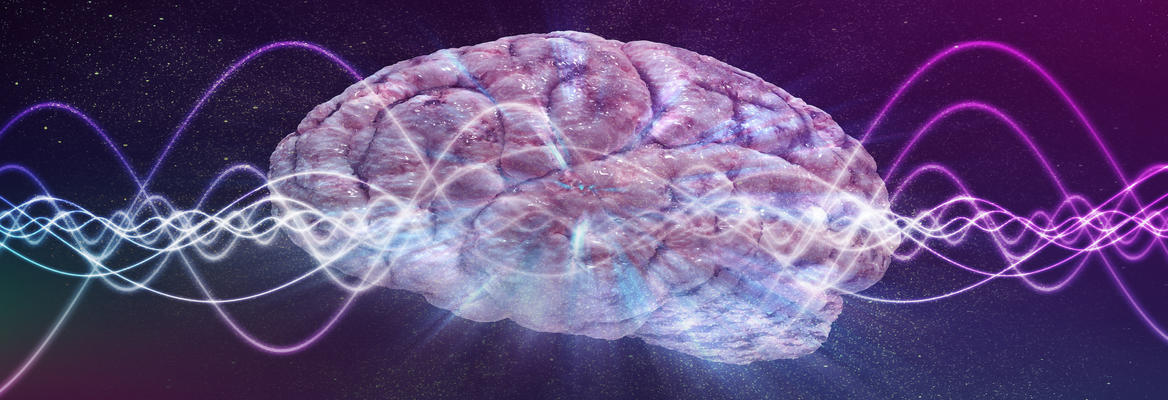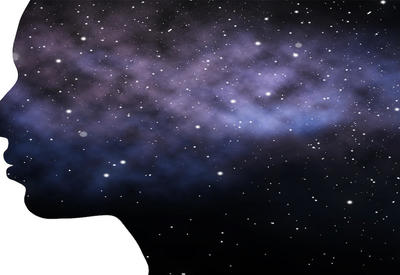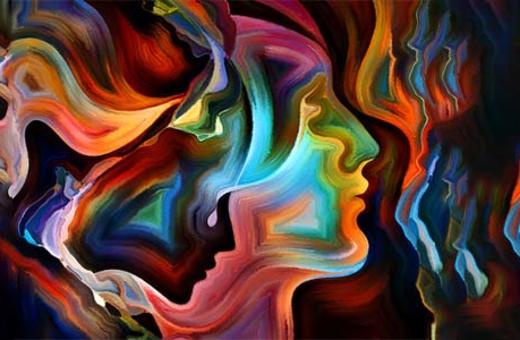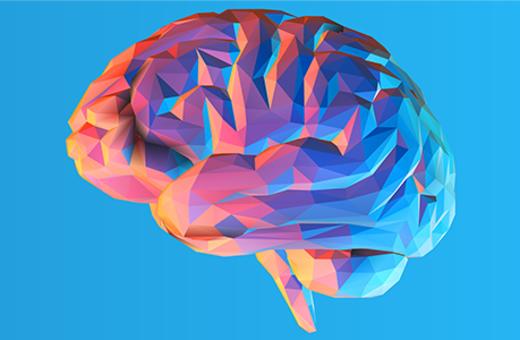Quantum mechanics and the organic light of consciousness

Consciousness defines our existence. It is, in a sense, all we really have, all we really are, The nature of consciousness has been pondered in many ways, in many cultures, for many years. But we still can’t quite fathom it.
 What physicists get wrong about consciousness
What physicists get wrong about consciousness
Consciousness is, some say, all-encompassing, comprising reality itself, the material world a mere illusion. Others say consciousness is the illusion, without any real sense of phenomenal experience, or conscious control. According to this view we are, as TH Huxley bleakly said, ‘merely helpless spectators, along for the ride’. Then, there are those who see the brain as a computer. Brain functions have historically been compared to contemporary information technologies, from the ancient Greek idea of memory as a ‘seal ring’ in wax, to telegraph switching circuits, holograms and computers. Neuroscientists, philosophers, and artificial intelligence (AI) proponents liken the brain to a complex computer of simple algorithmic neurons, connected by variable strength synapses. These processes may be suitable for non-conscious ‘auto-pilot’ functions, but can’t account for consciousness.
Finally there are those who take consciousness as fundamental, as connected somehow to the fine scale structure and physics of the universe. This includes, for example Roger Penrose’s view that consciousness is linked to the Objective Reduction process - the ‘collapse of the quantum wavefunction’ – an activity on the edge between quantum and classical realms. Some see such connections to fundamental physics as spiritual, as a connection to others, and to the universe, others see it as proof that consciousness is a fundamental feature of reality, one that developed long before life itself.
___
Penrose turned the conscious observer around. Instead of consciousness causing collapse, wavefunctions collapsed spontaneously, causing a moment – a ‘quantum – of consciousness.
___
Consciousness and the collapse of the wavefunction
Penrose was suggesting Objective Reduction not only as a scientific basis for consciousness, but also as a solution to the ‘measurement problem’ in quantum mechanics. Since the early 20th century, it has been known that quantum particles can exist in superposition of multiple possible states and/or locations simultaneously, described mathematically as a wavefunction according to the Schrödinger equation. But we don’t see such superpositions because, it appeared to early quantum researchers, the very act of measurement, or of conscious observation, seemed to ‘collapse’ the wavefunction to definite states and location - the conscious observer effect - consciousness collapsed the wavefunction. But this view put consciousness outside the purview of science. Another proposal is ‘Many Worlds’ in which there is no collapse, and each possibility evolves its own universe.
Penrose turned the conscious observer around. Instead of consciousness causing collapse, wavefunctions collapsed spontaneously, causing a moment – a ‘quantum – of consciousness. Collapse, or quantum state reduction, occurred at an objective threshold in the fine scale structure of spacetime geometry.
___
While the wave-function is viewed by many as pure mathematics in an abstract space, Penrose characterized it as a process in the fine scale structure of the universe.
___
Penrose first likened quantum particles to tiny curvatures in spacetime geometry (as Einstein’s General Theory of Relativity had done for large objects like the sun). Superposition states of multiple possibilities, or of delocalized particles, could then be viewed as opposing curvatures, and hence separations in the fine scale structure of the universe, spacetime geometry. Were such separations to continue, ‘Many Worlds’ would result.
But such separations would be unstable, and reduce, or ‘collapse’ to definite states, selected neither randomly, nor algorithmically, but ‘non-computably’, perhaps reflecting ‘Platonicvalues’ embedded in spacetime geometry. Thus while the wave-function is viewed by many as pure mathematics in an abstract space, Penrose characterized it as a process in the fine scale structure of the universe.
And each Objective Reduction event would entail a moment of ‘proto-conscious’ experience in a random microenvironment, without memory, or context. But occasionally, at least, a feeling of pleasure would arise, e.g. from quantum optical effects leading to Objective Reduction in a micelle, providing a feedback fitness function to to optimize pleasure. Virtually all human and animal behavior is in some way related to the pursuit of pleasure in its various forms.
___
In the mid 1990s I teamed with Roger Penrose to suggest that quantum vibrations in microtubules in brain neurons were ‘orchestrated’. Consciousness was somewhat like music in the structure of spacetime.
___
Proto-conscious moments would lack memory, meaning and context, but have phenomenal ‘qualia’ – a primitive form of conscious experience. They may be like the unharmonious tones, notes and sounds of an orchestra tuning up. In the mid 1990s I teamed with Roger Penrose to suggest that quantum vibrations in microtubules in brain neurons were ‘orchestrated’, hence ‘Orchestrated Objective Reduction’. Consciousness was somewhat like music in the structure of spacetime.
Our Orchestrated Objective Reduction theory was viewed skeptically. Technological quantum computers were operated near absolute zero temperatures to avoid thermal decoherence, so quantum prospects in the ‘warm, wet and noisy’ brain seemed unlikely. But we knew quantum optical activity could occur within non-polar regions in microtubule proteins, where anesthetics appeared to act to selectively block consciousness. Recently we were proven right: a quantum optical state of superradiance has been shown in microtubules, and preliminary evidence suggests it is inhibited by anesthetics. How do quantum activities at this level affect brain-wide functions and consciousness?
It is becoming apparent that consciousness may occur in single brain neurons extending upward into networks of neurons, but also downward and deeper, to terahertz quantum optical processes, e.g. ‘superradiance’ in microtubules, and further still to fundamental spacetime geometry (Figure 1). I agree that consciousness is fundamental, and concur with Roger Penrose that it involves self-collapse of the quantum wavefunction, a rippling in the fine scale structure of the universe.
Organic light per se isn’t consciousness. But organic light could be the interface between the brain and conscious processes in the fine scale structure of the universe.

Figure 1. A scale-invariant hierarchy extending downward from a cortical pyramidal neuron (left) into microtubules, tubulin dipoles, organic ring dipoles and spacetime geometry curvatures. Self-similar dynamics recur every three orders of magnitude.
Light and consciousness
Impossible to directly measure or observe, consciousness might reveal itself in the brain by significant deviation from mere algorithmic non-conscious processes, like reflexive, auto-pilot behaviors. Such deviation is found in cortical Layer V pyramidal neurons (see Figure 1) in awake animals, without changes in external membrane potentials. This suggests ‘conscious’ modulation may arise inside neurons, from deeper, faster quantum processes in cytoskeletal microtubules (see Figure 1). These could include Penrose Objective Reduction connecting to fundamental spacetime geometry.
Light is the part of the electromagnetic spectrum that can be seen by the eyes of humans and animals – visible light. Each point on the spectrum corresponds with a photon of a particular wavelength, and inverse frequency. Each wavelength is seen by the eye and brain as a different color. In addition to wavelength/frequency, photons have other properties including intensity, polarization, phase and orbital angular momentum.
Ancient traditions characterized consciousness as light. Religious figures were often depicted with luminous ‘halos’, and/or auras. Hindu deities are portrayed with luminous blue skin. And people who have ‘near death’ and ‘out of body’ experiences described being attracted toward a ‘white light’. In many cultures, those who have ‘awakened to the truth about reality’ are ‘enlightened.’
___
Organic light per se isn’t consciousness. But organic light could be the interface between the brain and conscious processes in the fine scale structure of the universe.
___
In recent years, biophotons have been determined to occur in brain neurons, e.g. in ultraviolet, visible and infra-red wavelengths from oxidative metabolism in mitochondria.
Light was prevalent in the early universe, e.g. for a period beginning 10 seconds after the Big Bang, when photons dominated the energy landscape and briefly illuminated reality. However photons, protons and electrons then fused into a hot, opaque plasma, obscuring reality for 350,000 years until the universe cooled, enabling electrons and protons to form neutral atoms, and build matter and structure. Photons became free to roam a mostly transparent universe, and upon meeting matter, reflect, scatter or be absorbed, generally without significant chemical interaction. However compounds containing organic carbon rings, essential molecules in living systems, are notable exceptions.
18th century chemists knew of linear chains of carbon atoms with extra hydrogens – ‘hydrocarbons’, like methane, propane etc. They also knew of an oily, highly flammable molecule with 6 carbons they called benzene, but didn’t understand its structure. One night the German chemist August Kekule had a dream, that linear hydrocarbons were snakes, and one swallowed its tail – the mythical ‘Ourobouros’. He awoke to proclaim (correctly, it turned out) “benzene is a ring”!
Each hexagonal carbon benzene ring has 3 extra electrons which extend as ‘electron clouds’ above and below the ring, comprised of what later became known as ‘pi’ electron resonance’ orbitals. Within these clouds, electrons can switch between specific orbitals and energy levels by first absorbing a photon, and then subsequently emitting a lower energy photon. This is the basis for quantum optical effects including fluorescence, phosphorescence, excitons and superradiance.
Hexagonal organic rings with quantum optical properties may fuse, and include 5-sided rings to form ‘indole’ rings found in psychoactive molecules, living systems, and throughout the universe, e.g. in interstellar dust.
The hot plasma of the early universe had led to formation of poly aromatic hydrocarbons (PAHs), fused organic (‘aromatic’) complexes of benzene and indole rings. Ice-encrusted in inter-stellar dust, PAHs are still quantum optically active, e.g. fluorescent, and emitting photons seen on earth. This ‘organic light’ may play a key role in the origin and development of life and consciousness.
Life and consciousness – Which came first?
Life on earth is said to have begun in a simmering mix of aqueous and oily compounds, sunlight and lightning, called the ‘Primordial soup’, as proposed by Oparin and Haldane in the early 20th century. In the 1950s Miller and Urey simulated a version of the primordial soup and found ‘amphipathic’ biomolecules with a non-polar, benzene-like pi resonance organic ring on one end, and a polar, charged tail on the other. Such molecules are prevalent in biology, e.g. aromatic amino acids tryptophan (indole ring), phenylalanine and tyrosine in proteins, components of membranes and nucleic acids, and psychoactive molecules like dopamine, serotonin, LSD and DMT .
Oparin and Haldane proposed the non-polar, ‘hydrophobic’ pi resonance electron clouds coalesced to avoid the aqueous environment (‘oil and water don’t mix’). The polar, water soluble tails would stick outwardly, forming a water soluble ‘micelle’ with a non-polar interior. These micelles somehow developed into functional cells, and then multi-cellular organisms, long before genes. But why would inanimate creatures self-organize to perform purposeful complex functions, grow and evolve behaviors? And then, presumably, at some point, develop consciousness? Or was consciousness ‘there all along’?
Mainstream science and philosophy assume that consciousness emerged at some point in the course of evolution, possibly fairly recently, with the advent of the brain and nervous systems. But Eastern spiritual traditions, panpsychism, and the Objective Reduction theory of Roger Penrose suggest that consciousness preceded life.
Back in the Primordial soup, could light-induced proto-conscious moments have occurred by Penrose Obejtive Reduction in micelles in the primordial soup? Did such moments provide a feedback fitness function to optimize primitive pleasure, sparking the origin of life and driving its evolution? Are similar events occurring in PAHs and organic rings throughout the universe?
4th May 2022












